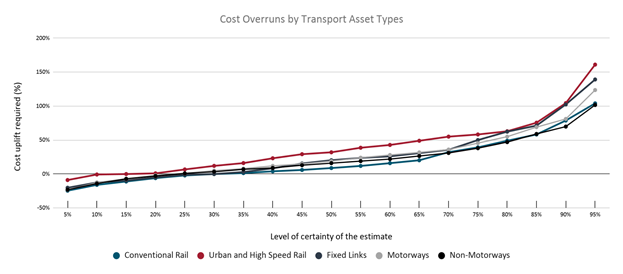PROGRESS 2050: Toward a prosperous future for all Australians
11/03/2022
More than $218 billion has been committed to major infrastructure projects over the next four years by the federal and state governments. While critical to support the COVID-19 recovery and deliver better quality of life, this record pipeline of public infrastructure investment has created unprecedented pressure on the sector.
With $53 billion expected to be spent on large projects in 2023, the peak of investment will exceed the levels of spending following the Global Financial Crisis (GFC), with nine times as many mega-projects exceeding $1 billion.
Infrastructure Australia’s 2021 Infrastructure Market Capacity Report found that shortages and constraints are beginning to appear across material, plant, equipment and labour. The constraints impacting the sector are cascading from the construction site to the supply chain, with shortages, waiting lists and cost escalation pressures biting in all areas, from trucks to steel and palettes to project engineers.
The impacts of constraints on the Australian sector are only beginning to emerge. The collapse of Probuild highlights a range of challenges associated with cost escalation and constraints, but also potential cultural challenges in the industry.
Constraints have real impacts
The financial difficulties faced by the sector are not unique to one company. More than 1000 insolvencies occurred in the construction industry last year, approximately one in every four companies.
While historically the sector was impacted by higher levels of insolvency and reports of phoenixing, recent reforms have diminished these concerns. Despite this, the sector now represents a higher proportion of insolvencies, and the number is again climbing, with the full impacts of the pandemic and recent flood disasters yet to play out.
The rigid focus on fixed-cost contracting, with the lowest cost as the singular measure of value, has created an environment of bad behaviour. Gaming the system through low ball tender responses, with profitability clawed back through variations and litigation, has become common practice.
These negative practices have also been seen through larger organisations pushing costs on to their suppliers. These smaller firms ultimately rely on their insurances in order provide protection. However, this behaviour has consequently put pressure on insurance costs. For contractors, there is a shift to higher cost, more defined policies with less coverage. For advisors, professional indemnity insurance coverage has decreased from $150-$200 million to around $50-$60 million.
Contractors are being influenced by their insurance coverage in their decisions to bid, and advisors are withdrawing services.
The implications of inaction are too great to ignore
Thin margins and limited insurance threaten to push the industry towards greater fragility. The wherewithal of organisations to manage poor project performance is undermined, with cost escalation pressures growing due to the value of work and 80 per cent of the future project pipeline being dominated by transport projects that have a significant risk of cost over-run.
Globally, the transport sector already sees 75 per cent of projects run over budget. A change is critical.

Meaningful reform will require collaboration
The need for reform in the sector is overdue. The construction sector has faced declining productivity across the last decade. Labour productivity has been stagnant for the past 20 years, with capital productivity collapsing.
The sector must recognise its challenges and commit to change. Infrastructure Australia’s new report Delivering Outcomes presents a wide-ranging roadmap for reform in the sector designed to boost productivity and to incorporate world’s best practice across infrastructure delivery and management.
Delivering Outcomes sets out a future where: outcomes provide the focus for infrastructure delivery; partners are engaged earlier in developing delivery approaches; integrated teams are brought together to innovate and collaborate to deliver outcomes for people and place; and digital transformation is used to develop intelligent solutions.
To achieve this step-change, seven focus areas of reforms are needed:
- Outcomes for people and places – infrastructure investment is driven by delivering economic, social and environmental outcomes to enable people and places to flourish and prosper;
- Systems – managing and planning infrastructure as a system drives more informed decision-making, leading to higher quality, faster and cheaper infrastructure solutions that better align to the needs of people and places;
- Digital – digital transformation will drive productivity and innovation in infrastructure delivery;
- Collaboration – collaboration and integration across the ecosystem will drive a financially sustainable and high-performing infrastructure industry;
- Commercial – commercial alignment and optimization drives industry financial sustainability and enables innovation;
- Innovation – Delivery integration and innovative techniques enable increased productivity; and
- People – People wellbeing and resilience is the foundation for a flourishing sector
While organisations may not engage across all reforms simultaneously, it presents a clarion call for direct effort and to support collaboration. Public and private sector organisations should look to the reform roadmap as a platform to describe change and to build collaboration.
Comments on Delivering Outcomes have been invited until 29 April. Infrastructure Australia’s 2021 Infrastructure Market Capacity Report is available on their website.
Peter Colacino is speaking at CEDA's upcoming conference in Sydney: Is Australia’s big infrastructure build delivering value? For more information and to get tickets see our event page.
